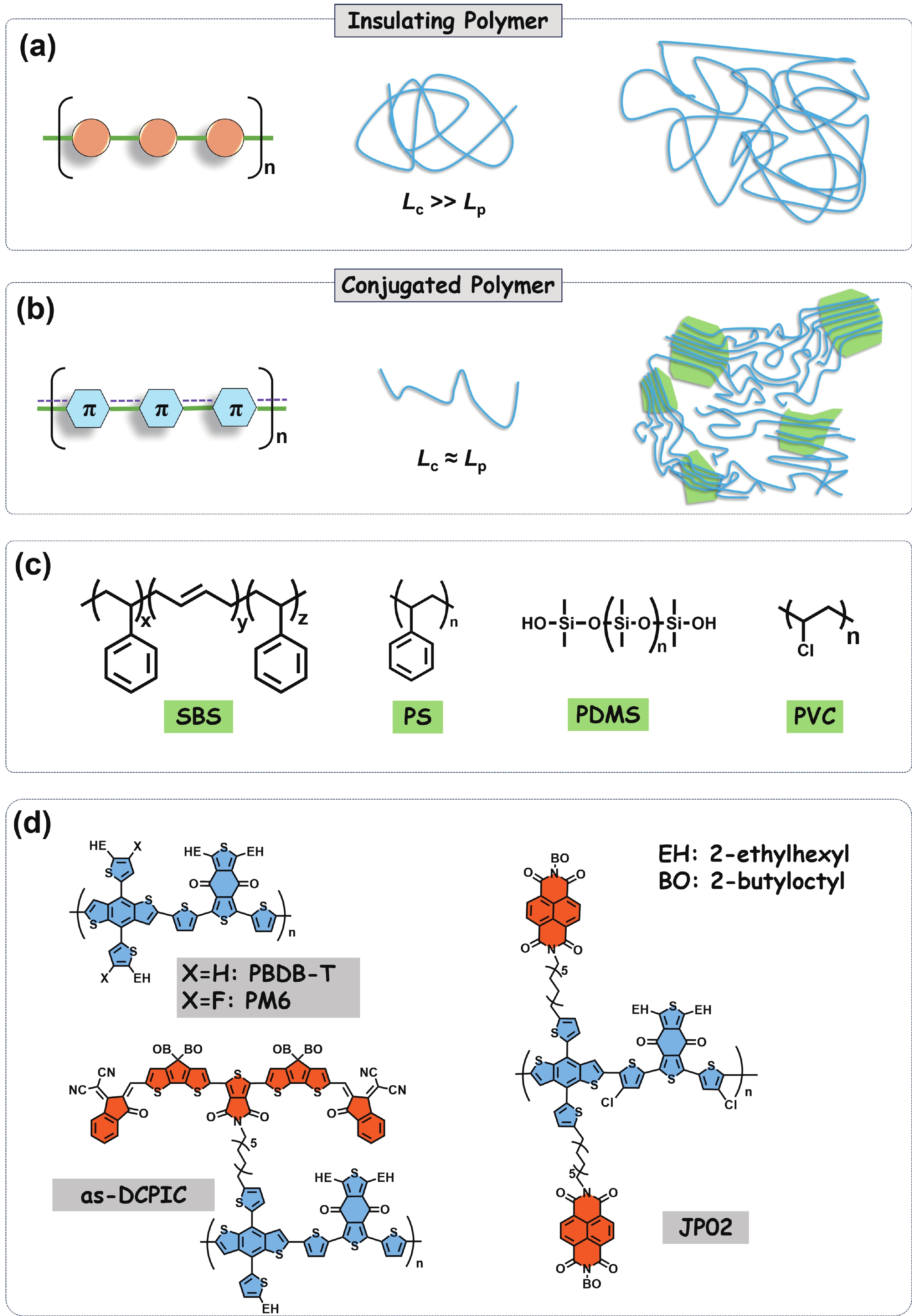| Citation: |
Zhonggao Bu, Chengyi Xiao, Jie Sun, Weiwei Li, Liming Ding. When insulating polymers meet conjugated polymers: the non-covalent bonding does matter[J]. Journal of Semiconductors, 2023, 44(11): 110202. doi: 10.1088/1674-4926/44/11/110202
****
Z G Bu, C Y Xiao, J Sun, W W Li, L M Ding. When insulating polymers meet conjugated polymers: the non-covalent bonding does matter[J]. J. Semicond, 2023, 44(11): 110202. doi: 10.1088/1674-4926/44/11/110202
|
When insulating polymers meet conjugated polymers: the non-covalent bonding does matter
DOI: 10.1088/1674-4926/44/11/110202
More Information
-
References
[1] Chiang C K, Fincher C R, Park Y W, et al. Electrical conductivity in doped polyacetylene. Phys Rev Lett, 1977, 39, 1098 doi: 10.1103/PhysRevLett.39.1098[2] Shirakawa H, Louis E J, MacDiarmid A G, et al. Synthesis of electrically conducting organic polymers: Halogen derivatives of polyacetylene, (CH)x. J Chem Soc, Chem Commun, 1977, 16, 578 doi: 10.1039/C39770000578[3] Zheng Y, Zhang S, Tok J B H, et al. Molecular design of stretchable polymer semiconductors: Current progress and future directions. J Am Chem Soc, 2022, 144, 4699 doi: 10.1021/jacs.2c00072[4] Wang Z L, Gao M Y, He C Y, et al. Unraveling the molar mass dependence of shearing-induced aggregation structure of a high-mobility polymer semiconductor. Adv Mater, 2022, 34, 2108255 doi: 10.1002/adma.202108255[5] Liu C H, Xiao C Y, Wang J, et al. Revisiting conjugated polymers with long-branched alkyl chains: High molecular weight, excellent mechanical properties, and low voltage losses. Macromolecules, 2022, 55, 5964 doi: 10.1021/acs.macromol.2c00741[6] Zhou K K, Xian K H, Qi Q C, et al. Unraveling the correlations between mechanical properties, miscibility, and film microstructure in all-polymer photovoltaic cells. Adv Funct Mater, 2022, 32, 2201781 doi: 10.1002/adfm.202201781[7] Xian K H, Zhou K K, Li M F, et al. Simultaneous optimization of efficiency, stretchability, and stability in all-polymer solar cells via aggregation control. Chin J Chem, 2023, 41, 159 doi: 10.1002/cjoc.202200564[8] Xie C C, Xiao C Y, Jiang X D, et al. Miscibility-controlled mechanical and photovoltaic properties in double-cable conjugated polymer/insulating polymer composites. Macromolecules, 2022, 55, 322 doi: 10.1021/acs.macromol.1c02111[9] Liu C H, Xiao C Y, Xie C C, et al. Insulating polymers as additives to bulk-heterojunction organic solar cells: The effect of miscibility. ChemPhysChem, 2022, 23, 202100725 doi: 10.1002/cphc.202100725[10] Guan C, Xiao C, Liu X, et al. Non-covalent interactions between polyvinyl chloride and conjugated polymers enable excellent mechanical properties and high stability in organic solar cells. Angew Chem Int Ed, 2023, 62, e202312357 doi: 10.1002/ange.202312357[11] Liang S J, Li W W, Ding L M. Single-component organic solar cells. J Semicond, 2023, 44, 030201 doi: 10.1088/1674-4926/44/3/030201 -
Proportional views






 DownLoad:
DownLoad:














